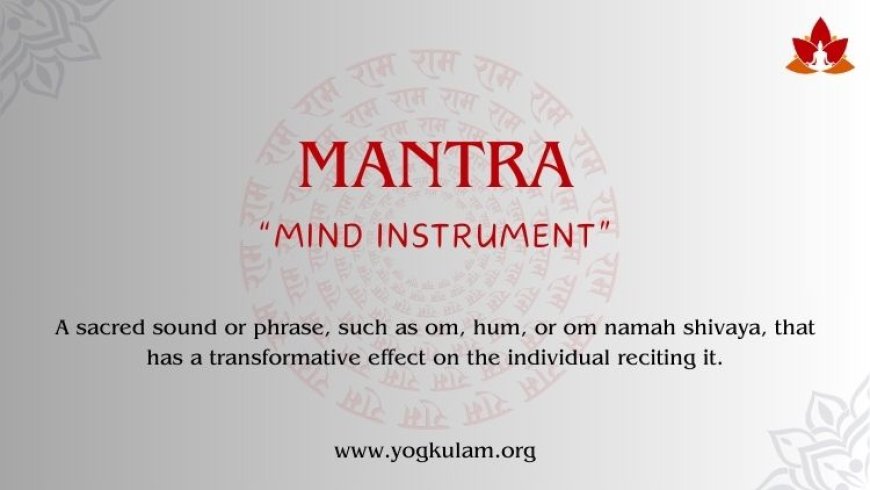Understanding Mantras and Meanings: A Pathway to Inner Peace and Spiritual Growth
Mantras are powerful sound vibrations or sacred phrases traditionally used in spiritual practices to focus the mind, cultivate inner peace, and connect with higher consciousness. Each mantra carries unique energy and purpose, often rooted in ancient languages like Sanskrit. Exploring mantras and meanings allows us to understand their deeper significance and apply them more mindfully in meditation, healing, or daily life. Whether chanted aloud or repeated silently, mantras serve as tools for transformation, clarity, and self-discovery.

Mantras have been an integral part of spiritual and meditative practices for thousands of years across various cultures and religions. At their core, mantras are sacred sounds, words, or phrases that are repeated either silently or aloud to aid concentration, invoke spiritual energies, and foster mental clarity. When we delve deeper into mantras and meanings, we unlock the profound wisdom embedded within these ancient syllables and discover how they can impact our lives positively.
What Are Mantras?
The word mantra comes from the ancient Sanskrit roots man meaning mind, and tra meaning instrument or tool. Thus, a mantra is essentially a tool for the mind a focused phrase or sound used to control thought patterns, calm the mind, and facilitate spiritual awakening. While many people associate mantras with Hinduism or Buddhism, similar practices can be found in other traditions worldwide, each with unique mantras and meanings.
The Power Behind Mantras and Meanings
Mantras are not just words; they are vibrational codes that resonate at certain frequencies. This resonance can influence the mind, body, and spirit, promoting healing, balance, and inner peace. The meanings behind mantras often relate to universal concepts such as love, compassion, protection, or enlightenment. For example, the well-known mantra Om symbolizes the primordial sound of the universe and represents the essence of ultimate reality.
Understanding the mantras and meanings is essential because it helps practitioners connect deeply with the purpose of the chant. Without knowledge of the meaning, a mantra might become a mechanical repetition rather than a conscious, transformative practice. When you understand the significance behind a mantra, you engage both the intellect and the soul, creating a more profound meditative experience.
Common Mantras and Their Meanings
-
Om (Aum): Considered the most sacred sound, Om is the sound of creation and the universe. It signifies the union of body, mind, and spirit.
-
Gayatri Mantra: This ancient Vedic mantra is a prayer for enlightenment and wisdom, asking for the awakening of the intellect and illumination of the soul.
-
Om Mani Padme Hum: A Tibetan Buddhist mantra that invokes compassion and the embodiment of the enlightened qualities of the Buddha.
-
So Hum: Meaning I am that, this mantra helps practitioners realize their connection with the universe and the divine nature within.
By understanding the mantras and meanings, one can choose a mantra that resonates personally and use it to guide meditation or mindfulness practice effectively.
How to Use Mantras in Daily Life
Incorporating mantras into daily life can be as simple as setting aside a few minutes for chanting or silent repetition. The key is consistency and mindful engagement. Begin by selecting a mantra whose meaning inspires or comforts you. Find a quiet place, close your eyes, and focus on the sound and vibration as you repeat the mantra. This practice can reduce stress, improve concentration, and cultivate a sense of calm and centeredness.
Beyond meditation, mantras and meanings can be integrated into daily routines repeated during walks, before sleep, or during moments of anxiety. Their positive vibrations help reshape negative thought patterns and anchor you in a state of peace.
The Scientific Perspective on Mantras and Meanings
Modern science is increasingly recognizing the benefits of mantra meditation. Research shows that repeating mantras can lower blood pressure, reduce cortisol levels (the stress hormone), and enhance brain wave patterns associated with relaxation and creativity. The meanings behind mantras also contribute to psychological well-being by reinforcing positive beliefs and emotional states.
Conclusion
Mantras are much more than repetitive chants; they are potent spiritual tools whose true power lies in understanding the mantras and meanings behind them. By engaging with these sacred sounds consciously, we can transform our minds, heal our bodies, and elevate our spirits. Whether you seek peace, healing, or spiritual growth, exploring mantras and their meanings opens a door to profound inner transformation and connection with the universe.


































